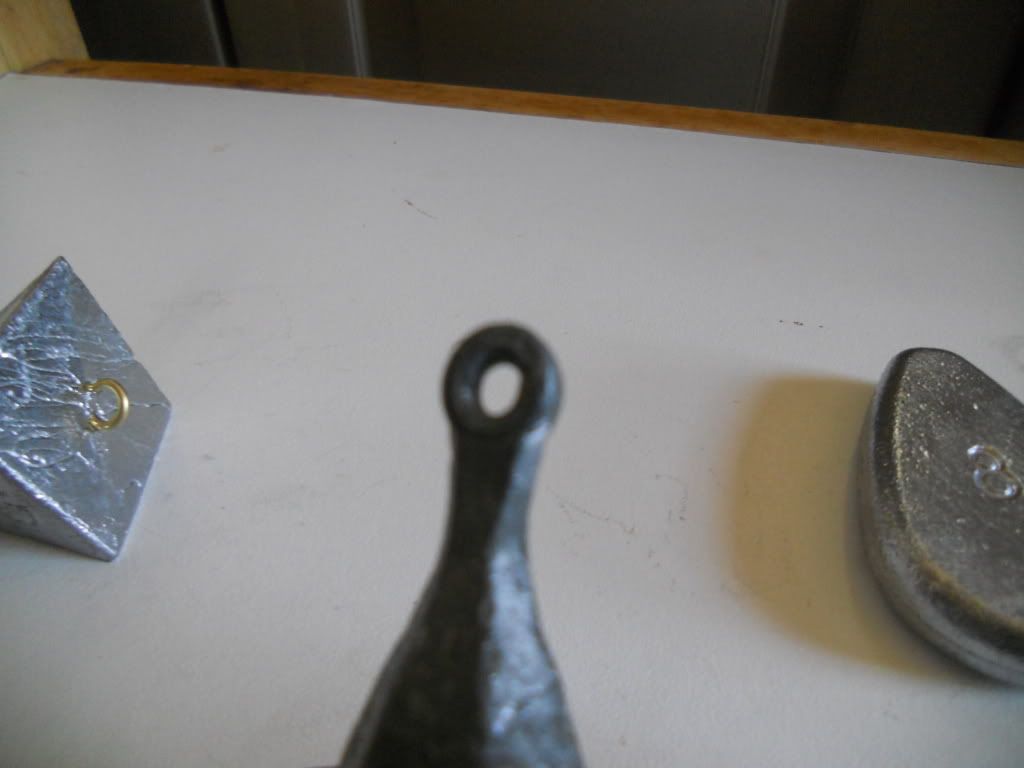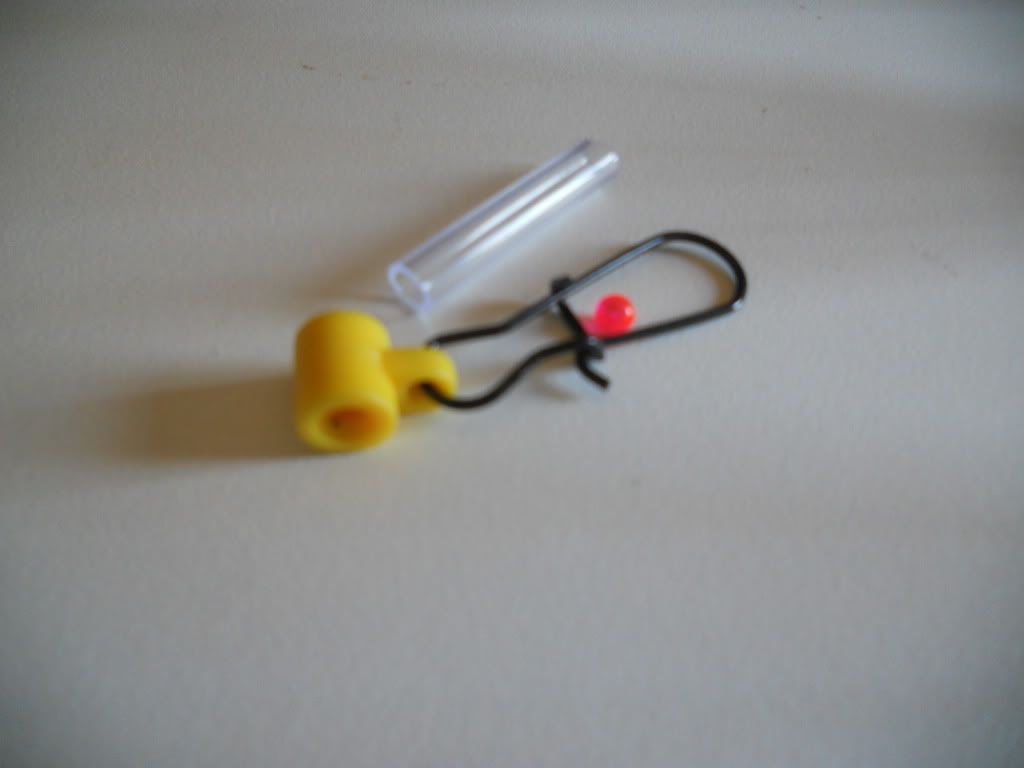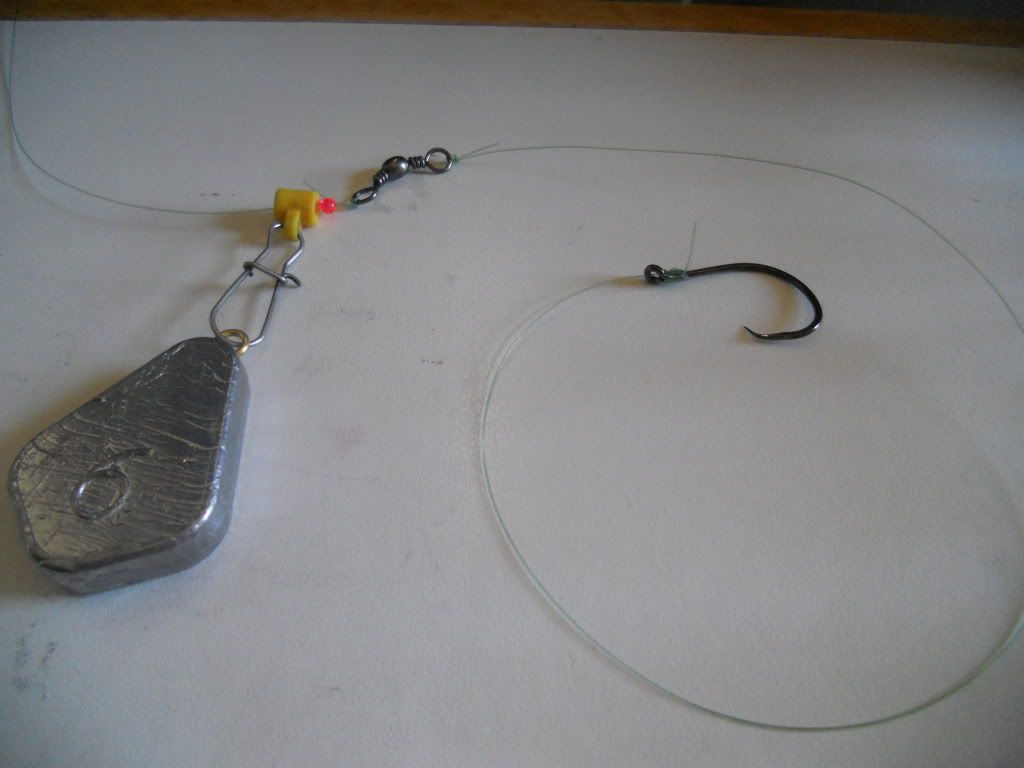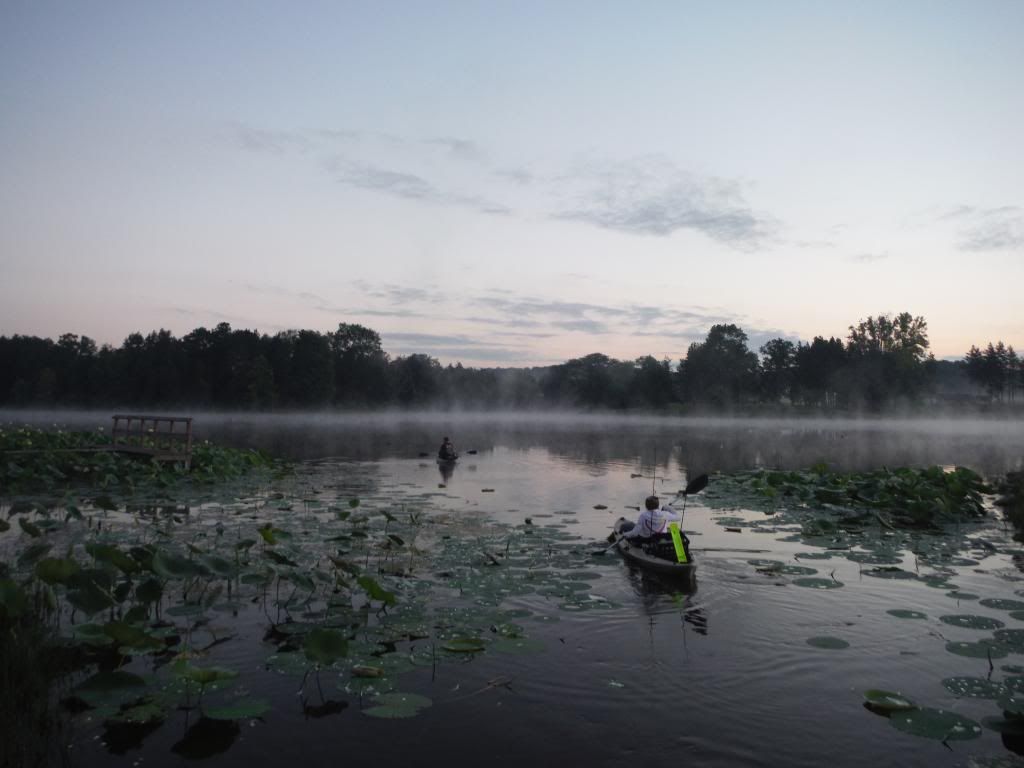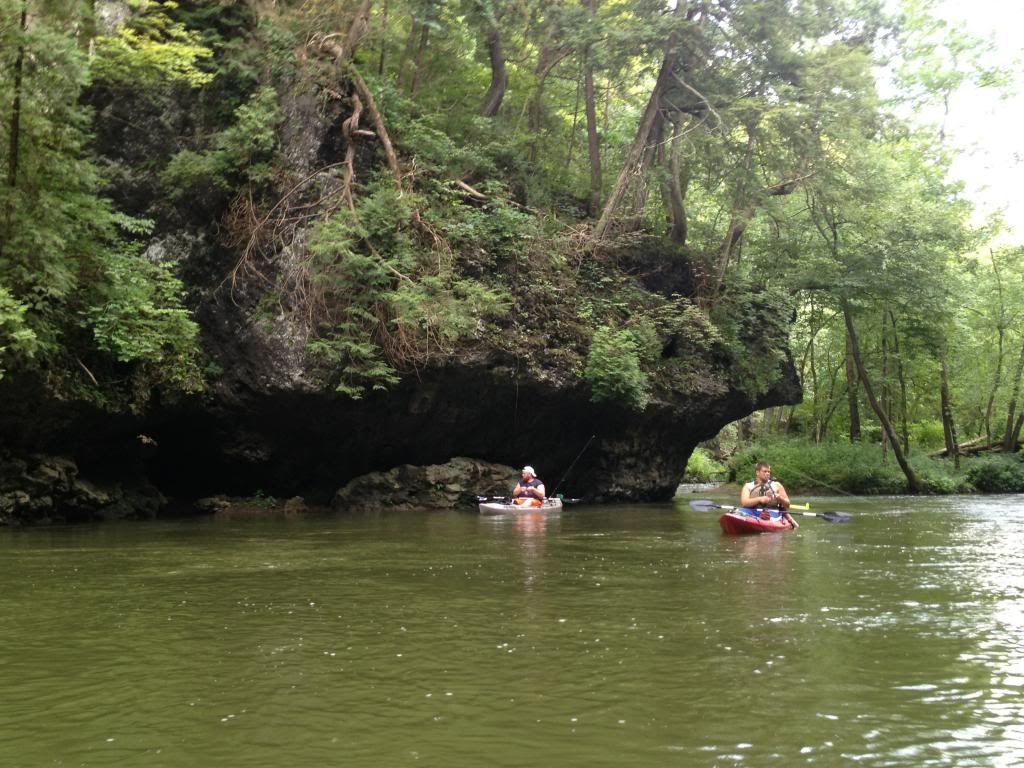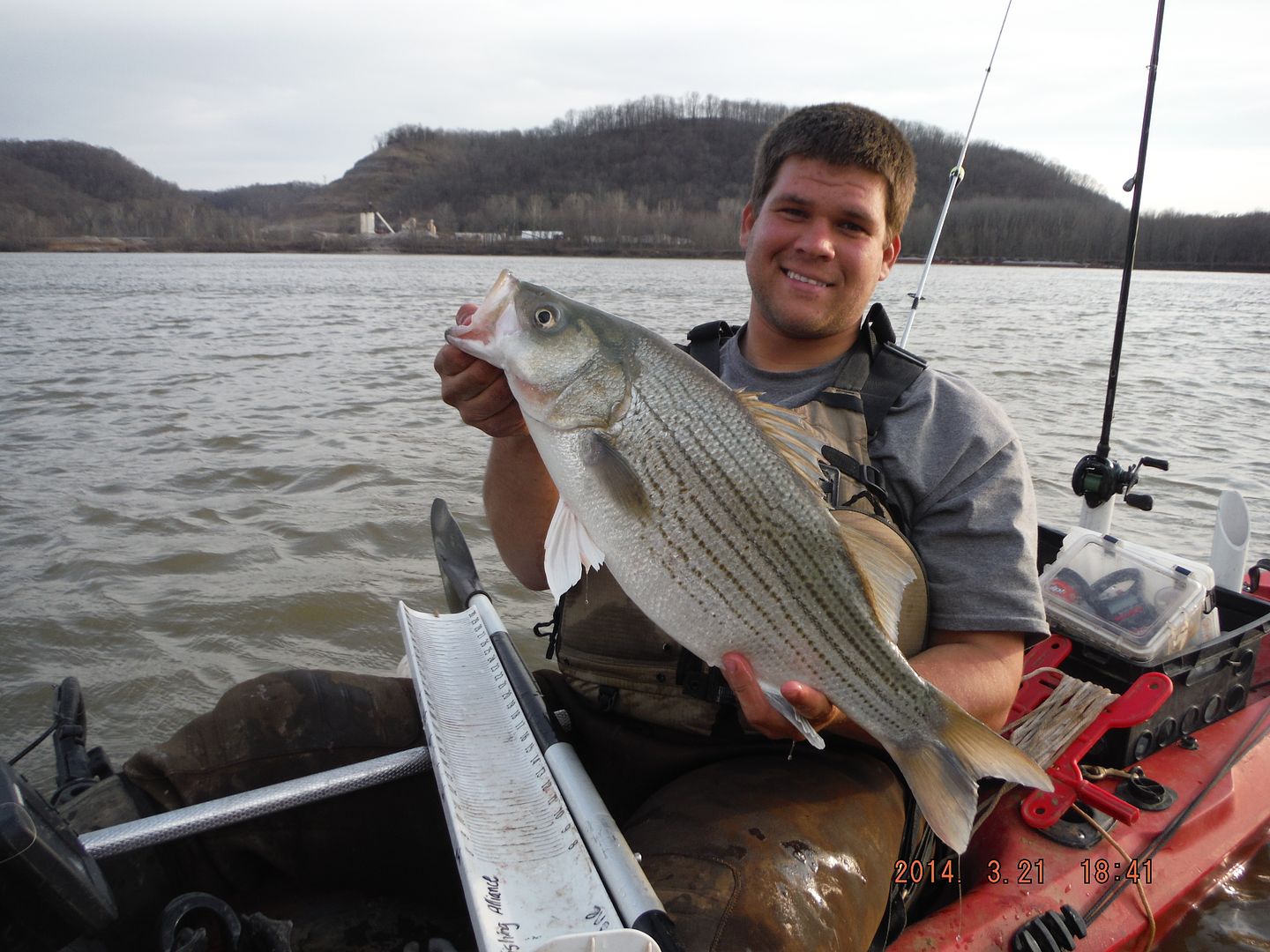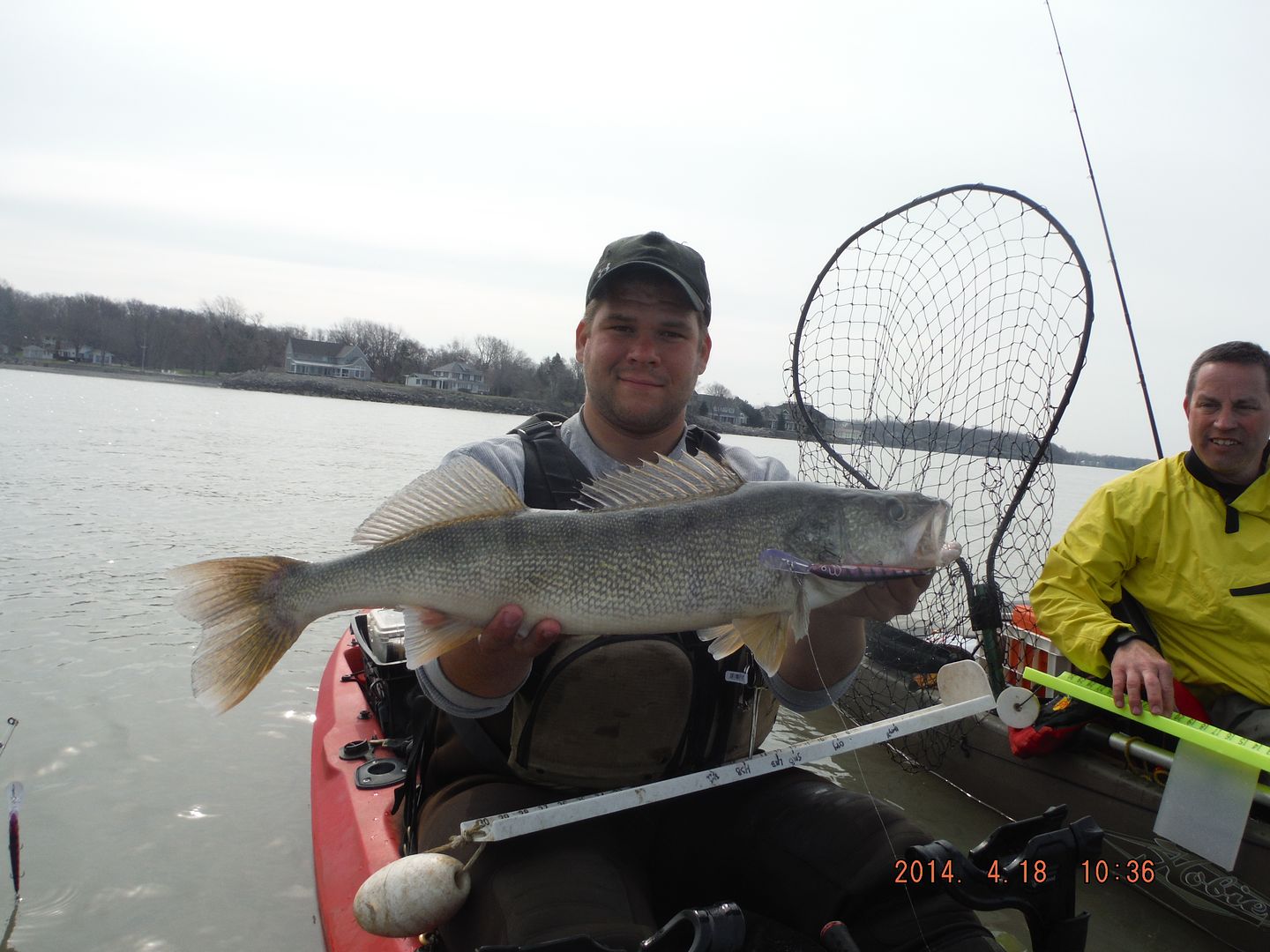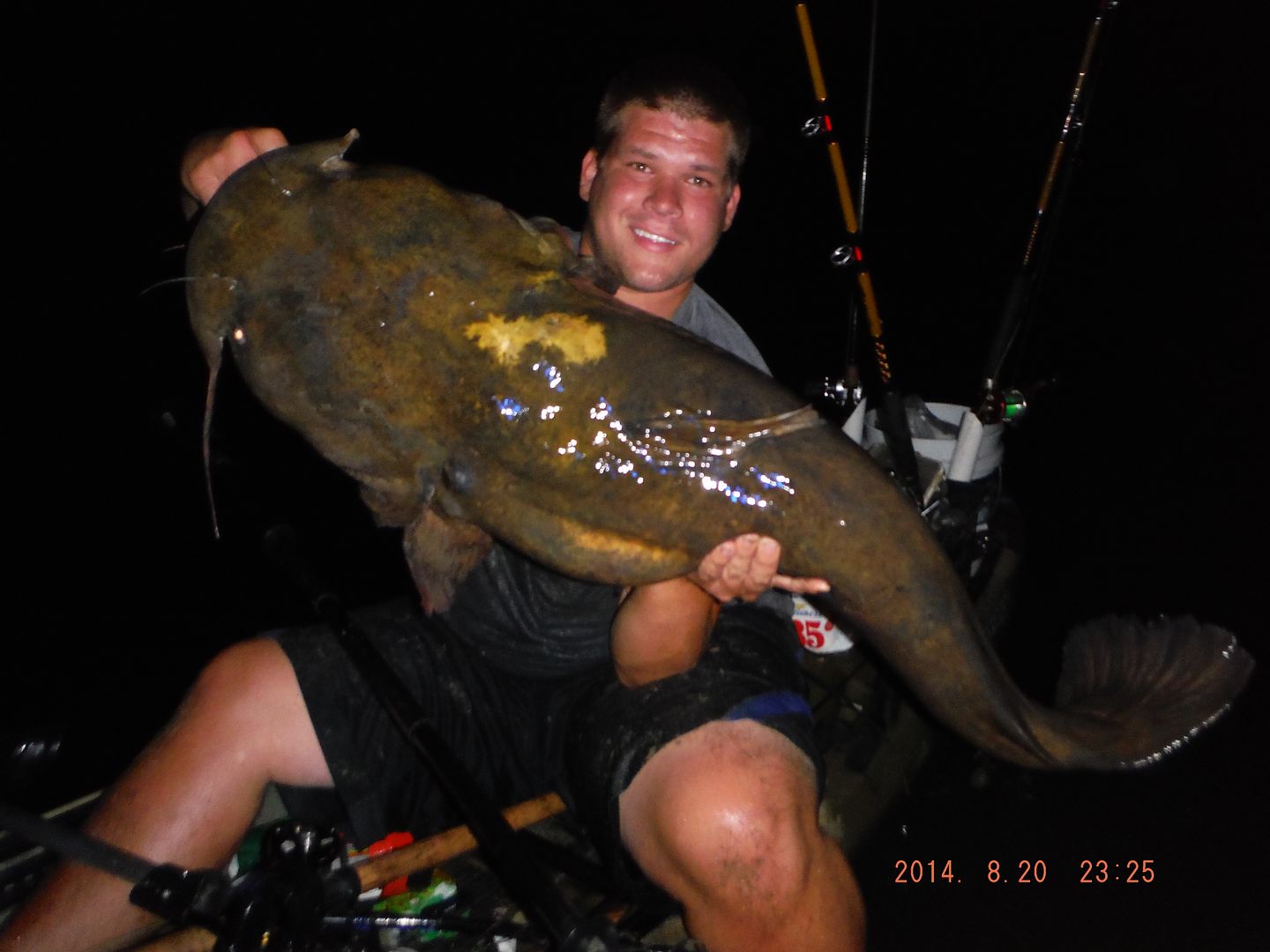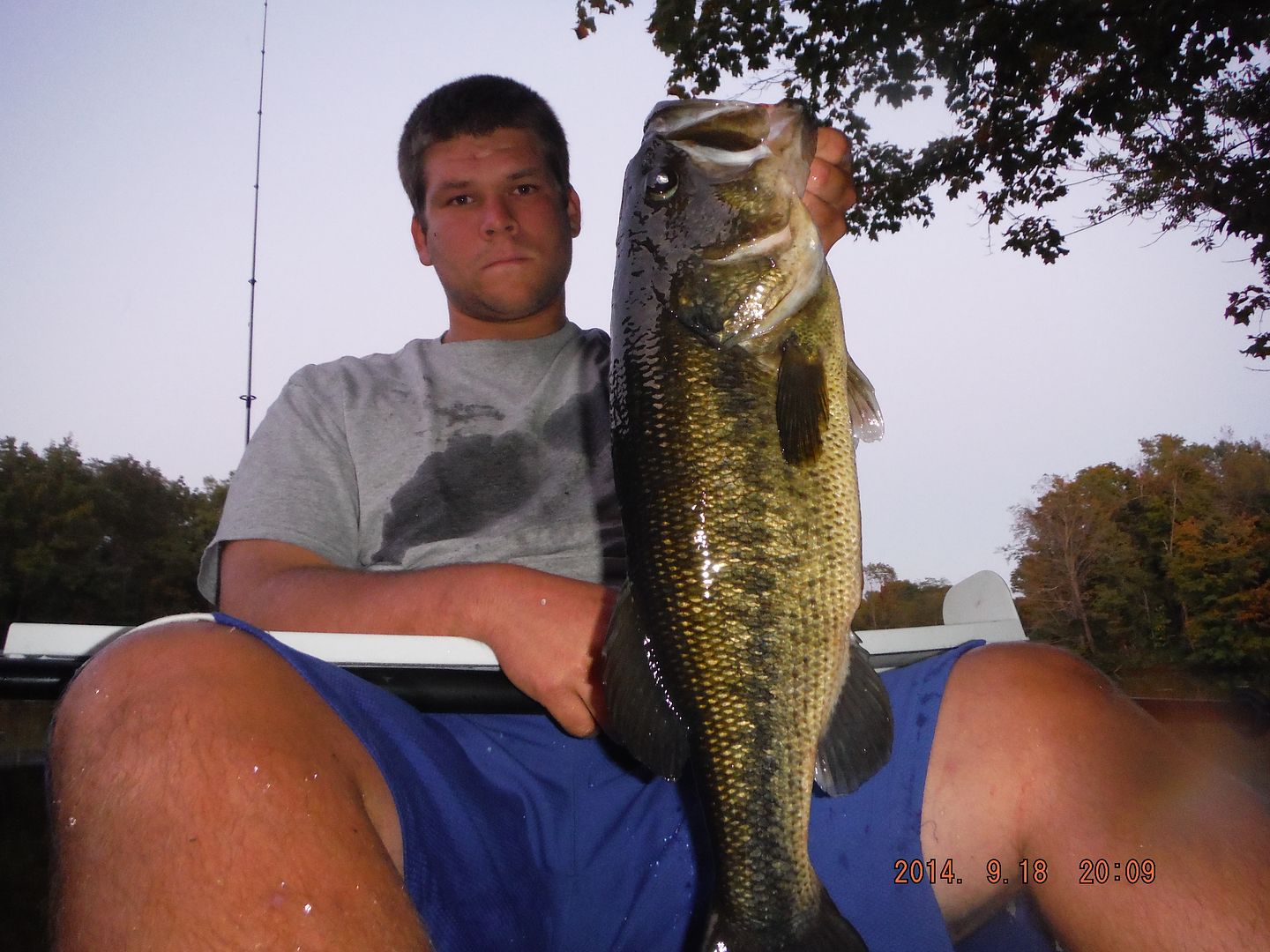A couple of weeks ago I had the opportunity to float Rocky Fork Creek with Vic Mchenry. A week prior to this trip Vic and I had met up and fished for crappie out of my boat on the big lake. The bite was slow up until 4pm so we had a lot of time to talk about things. One such thing was floating Rocky Fork Creek. Vic had yet to experience this particular float and showed interest in heading back down to do so. Fast forward 5 days.....It's Thursday afternoon, I'm sitting at work dreaming about fishing. I check the weather prediction for Friday and looks absolutely amazing, I then start scouting water levels of local creeks and rivers. The very first place I checked up on was Rocky Fork Creek, Its a rather difficult creek to fish if the flows aren't perfect. Too high and your looking at Class II rapids (yes there are a few streams in southern Ohio that are classified as class II or better, not many but there are a few. Reference site: American Whitewater) and too low and you'll wear the bottom of your kayak out dragging through shallow sections of river. The creek just happened to be flowing at 190 cubic feet per second and dropping -2 cfs every other hour. Now this was a little higher than I would have liked to fish the creek but it was safe enough to float and fish, in other words I wasn't going to waste this opportunity. I sent Vic a text to see if he was able to head down and fish the creek with me, and without hesitation he agreed to head down.
Story:
Vic and I met up around 10am and began moving kayaks from one vehicle to another. We arrived at the launch location around 10:30am and began carrying our things down to the water. Once our kayaks were loaded I told Vic that we were going to float our kayaks down past the first major rapid under the mill dam. This rapid was particularly violent, the current slammed into a large house sized rock, made a 90 degree bend, and then proceeded to run its course for 10 yards before running into another 90 degree bend with car sized rocks. Needless to say we were both relieved to get below this rapid. At this point I didn't realize anything out of the ordinary, I was leading the way and Vic was following. Vic on the other hand finally realized what I had gotten him into.
The next rapid came fairly quickly and he mentioned portaging and going around, the water was still ripping through this section so I portaged with him. The third series of rapids approached and he portaged yet again. This time around I went ahead and ran the rapid to show him that it was safe. At the bottom of the third rapid Vic mentioned that he had limited experience on moving water in his kayak. This was when everything clicked.
(In my head I thought, "Great, I've brought this guy to one of the worst possible places to learn how to navigate moving water. We could have started out on Ohio Brush Creek or another small stream where riffles are miles apart and pools are slow moving.......OH NO! You've got to take him to the fastest moving stream in southern Ohio with riffles and rapids every 40 yards. Vic's never fishing with me again.")
Now that is what I thought, but I didn't dare speak it out loud. He needed encouragement, and quite frankly so did I....even if I didn't believe it myself. I just told Vic what I had been told to do on moving water and what I had learned through trial and error (lots of error). I told him to keep your nose going straight down the river.....Keep paddling through rapids.... always maintain control of your kayak, even if that means paddling faster......follow my path...etc... and you'll be fine.
Halfway through the 6 plus mile trip, he had settled into a grove and was floating the rapids with confidence, even some of the trickier ones.
He had essentially grew as a paddler as much in this one trip as I did in my first 2 years of kayaking. If someone would have dropped me in this creek on my first moving water trip I know for certain I wouldn't have handled it half as well as he did. After the third riffle I would have tried to find a way back to the car, I would have tied the kayak off and waited for the creek to drop if that's what it meant I had to do. In the end it was an experience that I was glad I got to share with Vic.
Soon enough Vic was rewarded for his efforts, as we reached the part in the float that we had been waiting for all day. (You really need to look at these pictures on a large computer screen to enjoy them fully....of course the pictures don't do the landscape justice)














